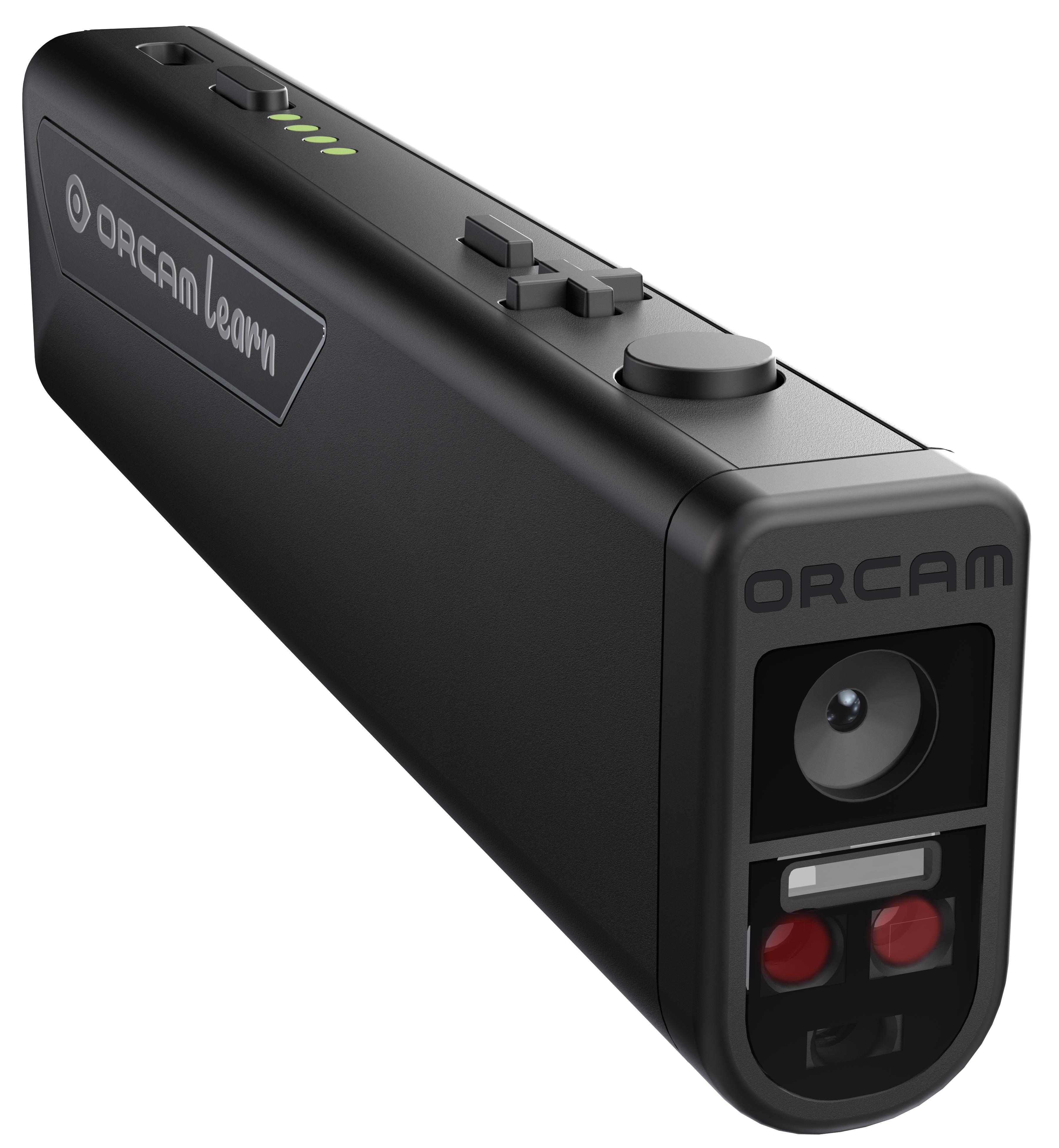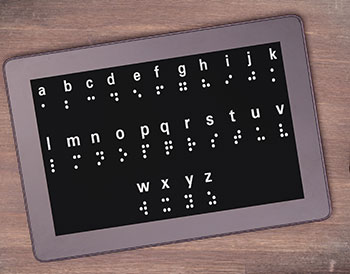A Guide to Life-altering Assistive Modern Technology for the Blind and Aesthetically Impaired
The improvement of assistive innovation has actually ushered in a transformative age for people that are blind or aesthetically damaged, offering devices that enhance autonomy and improve daily experiences. Developments such as smart navigating tools and AI-driven applications are redefining exactly how users interact with their environments, while obtainable analysis options and smart home modern technologies promise to more boost the lifestyle. As these modern technologies continue to progress, one must consider not just their performances but additionally their effect on fostering independence and inclusivity. What does this mean for the future of access?
Smart Navigating Devices
Smart navigating tools are reinventing the means individuals who are blind or visually impaired engage with their setting. These sophisticated innovations, which integrate GPS, audio comments, and haptic signals, offer individuals with vital details concerning their environments, boosting their freedom and flexibility.
One noticeable instance is using clever walking canes outfitted with sensors that discover challenges and offer real-time comments with resonances or audio hints. These tools enable users to navigate complicated atmospheres, such as hectic streets or crowded public spaces, with increased confidence. Additionally, wearable tools, such as clever glasses, are being created to aid in identifying faces, reviewing text, and determining objects, further boosting the customer's spatial understanding.
Moreover, smart navigating devices are significantly integrating expert system to assess information and adapt to users' preferences. This tailored strategy not just boosts navigation efficiency however likewise cultivates a feeling of empowerment among customers. As innovation remains to breakthrough, the capacity for smart navigation devices to produce an extra comprehensive and available globe for individuals that are blind or aesthetically impaired stays promising, inevitably reshaping their day-to-day experiences and interactions.
Innovative Mobile Apps
Mobile applications are arising as effective devices for aiding people that are visually impaired or blind, providing a series of functionalities that enhance daily living. These apps harness progressed innovation to help with day-to-day jobs, improve availability, and advertise independence.
One classification of ingenious mobile applications concentrates on visual recognition. Applications like Be My Eyes connect individuals with sighted volunteers via video calls, making it possible for real-time help for jobs such as reviewing tags or browsing strange settings. Similarly, apps like Seeing AI utilize synthetic knowledge to describe environments, reviewed text, and recognize objects, offering users with critical information at their fingertips.
An additional significant area is navigating and positioning. Applications such as Aira and Close-by Traveler provide audio support, assisting users browse city spaces easily. They use personalized assistance, enabling an extra confident expedition of the setting.
Additionally, health and wellness applications cater to details requirements, such as drug administration and physical fitness monitoring. These applications intend to promote an all natural approach to health, ensuring that customers can keep their health separately.
Wearable Assistive Devices
Wearable assistive gadgets represent a considerable advancement in innovation designed to support people that are aesthetically impaired or blind. These tools improve mobility and self-reliance by offering real-time feedback concerning the surrounding atmosphere. Among one of the most significant wearable innovations are smart glasses geared up with cameras and sensors, which can identify barriers and relay critical details through audio cues.

One more ingenious alternative includes wrist-worn devices that utilize ultrasonic waves to identify barriers and supply navigational support. These gadgets typically include adjustable settings, permitting customers to customize the informs to their particular needs.
The combination of man-made knowledge in wearable assistive technology is also noteworthy, as it continuously boosts the accuracy and responsiveness of these devices. Overall, wearable assistive devices are transforming the lives of the blind and aesthetically impaired, promoting higher freedom and enhancing high quality of life click here now with ingenious solutions.
Available Reading Solutions
Obtainable analysis services play a vital role in allowing people who are aesthetically damaged or blind to engage with message throughout different layouts. These remedies encompass home a series of devices and technologies designed to improve reading experiences, from standard print products to digital material.
One prominent remedy is Optical Character Acknowledgment (OPTICAL CHARACTER RECOGNITION) technology, which converts printed message right into digital format, allowing customers to pay attention to or read the material making use of display viewers. Additionally, specialized e-readers outfitted with text-to-speech capacities supply adjustable analysis experiences, making it possible for customers to readjust font sizes and background shades for boosted visibility.
One more efficient approach is braille displays, which supply responsive comments by converting digital text into braille. This enables individuals to check out via touch, promoting better self-reliance and access to literature. Moreover, mobile applications made for reading scanned documents or publications can empower individuals with instant accessibility to a substantial collection of materials.

Smart Home Technologies
Smart home innovations have actually reinvented the way people who are visually impaired or blind communicate with their living atmospheres, boosting both independence and safety. These innovative solutions utilize automation and connection to produce an easily accessible home customized to the demands of customers.
Smart speakers and voice-activated aides give hands-free control over different tools, enabling customers to adjust illumination, temperature level, and safety and security steps via easy voice commands. This capability decreases dependence on sighted aid and fosters a sense of freedom. Furthermore, smart lights systems can be customized to provide acoustic feedback or responsive signs, allowing individuals to navigate their homes better.
Furthermore, protection systems equipped with smart video cameras and sensors can send out real-time signals to individuals, boosting individual safety and security without necessitating aesthetic verification. Automated door locks provide assurance, allowing customers to aviator glasses frames safeguard their homes effortlessly.
Integrating wise home innovations not only improves daily living but also encourages social interaction through linked devices - Smart glasses for the visually impaired. With continuous improvements in assistive innovation, the future appears promising, as even more options will emerge to more equip individuals that are blind or aesthetically damaged, making sure a more independent and comprehensive way of life
Verdict
In conclusion, the innovations in assistive modern technology for the visually damaged and blind represent a substantial leap toward boosting self-reliance and top quality of life. Smart navigating devices, innovative mobile applications, wearable gadgets, obtainable reading remedies, and clever home modern technologies collectively foster a comprehensive setting. This combination of innovation not only boosts wheelchair and day-to-day living however also empowers individuals to engage fully with their environments, promoting greater autonomy and engagement in society.
Advancements such as wise navigation devices and AI-driven applications are redefining exactly how individuals engage with their surroundings, while easily accessible reading solutions and wise home modern technologies promise to further boost the top quality of life. As modern technology proceeds to development, the capacity for wise navigating devices to produce a more easily accessible and inclusive world for people that are blind or aesthetically damaged continues to be appealing, eventually reshaping their everyday experiences and communications.
Wearable assistive gadgets represent a significant advancement in modern technology created to support people who are aesthetically damaged or blind. Among the most remarkable wearable modern technologies are smart glasses furnished with cams and sensors, which can determine barriers and relay important details via sound signs.
Smart navigating devices, innovative mobile applications, wearable tools, accessible analysis remedies, and wise home technologies collectively promote a comprehensive environment.